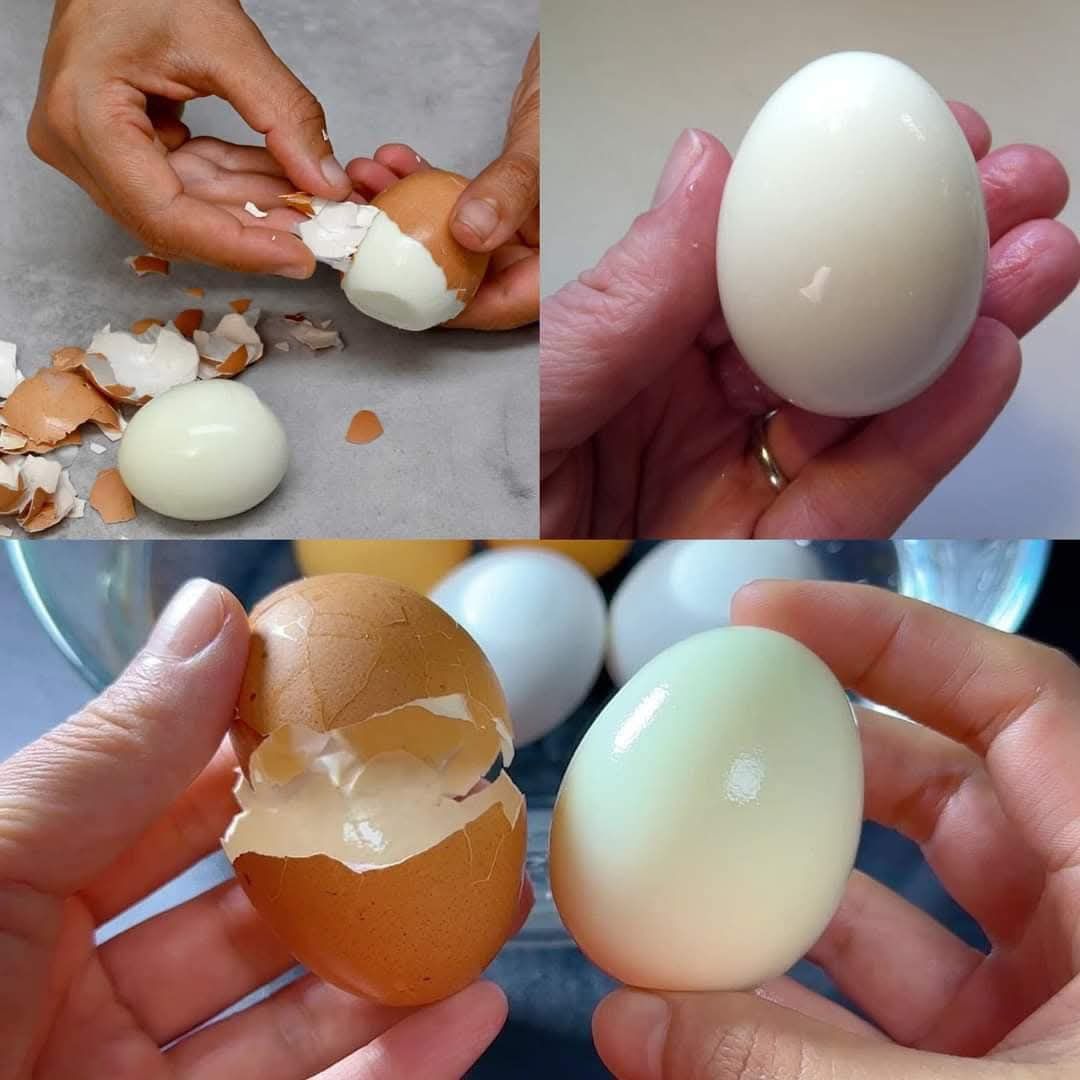ADVERTISEMENT
For Complete Cooking STEPS Please Head On Over To Next Page Or Open button (>) and don’t forget to SHARE with your Facebook friends
The Ultimate Boiling Egg Trick: The “Start with Hot Water” Method
The trick to perfect boiled eggs isn’t in how long you boil them—it’s in starting the eggs in hot water, not cold. This method helps ensure the eggs cook more evenly, resulting in tender whites and smooth, bright yellow yolks. It also makes the peeling process a whole lot easier!
Here’s how to do it:
Step-by-Step Guide to Perfect Boiled Eggs:
1. Bring Water to a Boil First
Instead of starting with cold water, begin by bringing a pot of water to a boil. Fill the pot with enough water to cover the eggs by about an inch or so. You’ll want to bring the water to a rolling boil over medium-high heat.
2. Gently Lower Eggs into the Boiling Water
Once the water is boiling, use a slotted spoon or tongs to carefully lower your eggs into the pot. This step is key—by adding the eggs to already-boiling water, you create an instant thermal shock that helps seal the eggs’ outer membrane, which in turn helps with peeling later on.
3. Boil the Eggs for the Right Amount of Time
Now, reduce the heat to a gentle simmer and cook your eggs for the following times, depending on how you prefer your eggs:
- Soft-boiled eggs: Simmer for 4-5 minutes (slightly runny yolk)
- Medium-boiled eggs: Simmer for 7-8 minutes (creamy yolk)
- Hard-boiled eggs: Simmer for 9-12 minutes (firm yolk)
For the perfect hard-boiled egg, aim for around 10 minutes, as this will give you a fully cooked egg with a firm yolk and tender whites.
4. Cool the Eggs Quickly
Once the eggs have reached your desired cooking time, remove them from the boiling water using a slotted spoon and place them into a bowl of ice water or run them under cold tap water. This step halts the cooking process and makes it much easier to peel the eggs. Allow them to sit in the ice water for at least 5-10 minutes.
5. Peel with Ease
Once the eggs are cool to the touch, tap them gently on a hard surface to crack the shell. Start peeling from the wider end, where there’s typically a small air pocket. The membrane between the egg white and the shell will have been loosened, making it far easier to peel the egg without taking bits of the white with you.
Why Does This Method Work?
The key to the success of the “start with hot water” method is the way heat transfers to the eggs. By starting in hot water, the outer shell of the egg cooks more evenly and quickly, while the egg white inside remains tender and less likely to stick to the shell. The quick boil also helps to prevent overcooking, ensuring a perfectly cooked yolk that is neither rubbery nor chalky.
Additionally, the ice bath immediately cools the egg down, causing the egg whites to contract slightly, which helps loosen the shell. This is why it’s far easier to peel the eggs after they’ve cooled in an ice bath compared to letting them cool at room temperature.
For Complete Cooking STEPS Please Head On Over To Next Page Or Open button (>) and don’t forget to SHARE with your Facebook friends
Tips for the Perfect Boiled Egg Every Time
- Use Older Eggs for Easier Peeling: Fresh eggs tend to be more difficult to peel because their pH is lower, causing the proteins to bond tightly with the eggshell. If possible, use eggs that are at least a few days old for the best results.
- Don’t Overcrowd the Pot: When boiling multiple eggs, make sure they have enough space to move around in the water. Overcrowding the pot can lead to uneven cooking.
- Adjust Cooking Time for Altitude: If you live at a higher altitude, you may need to increase the boiling time slightly. Higher altitudes result in lower boiling temperatures, so a few extra minutes may be needed to achieve the same results.
- Make a Batch: Boiled eggs keep well in the fridge for several days, making them a perfect snack or addition to meals. You can make a batch of eggs for the week ahead and store them in the fridge, ready to go.
- Experiment with Flavors: While plain boiled eggs are delicious, you can also add a bit of flavor. Try adding a pinch of salt, a dash of vinegar, or even a sprig of fresh herbs to the water for a unique twist.
The Bottom Line:
Boiling eggs may seem simple, but if you’ve ever dealt with the frustration of cracked shells, overcooked yolks, or hard-to-peel eggs, you’ll understand the importance of the right technique. Starting your eggs in hot water, following the correct cooking time, and cooling them quickly in an ice bath will make all the difference. This trick will ensure you get perfectly boiled eggs every time, whether you like them soft or hard-boiled.
Next time you’re preparing boiled eggs, skip the cold water method and opt for the “start with hot water” method. Not only will you avoid common pitfalls, but you’ll also impress your friends and family with your perfect egg results!
Happy boiling!
